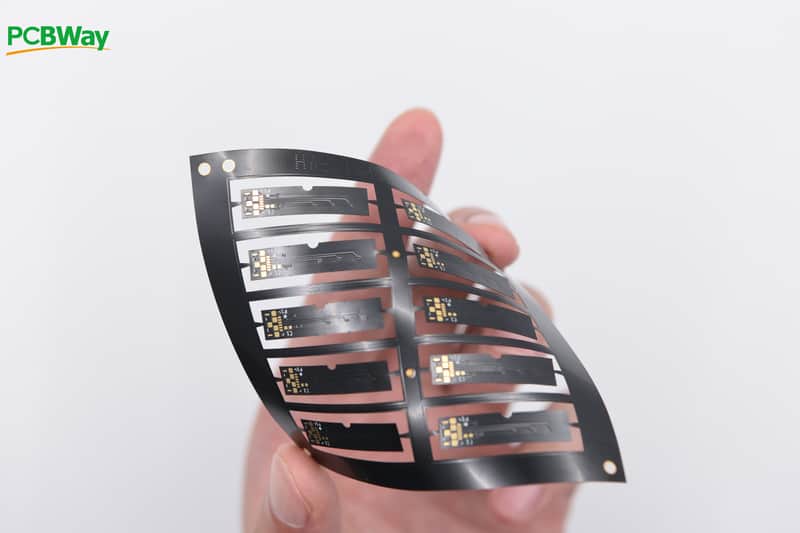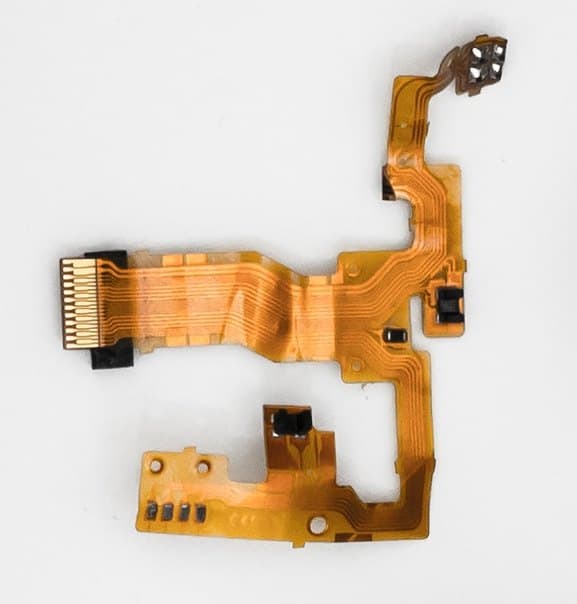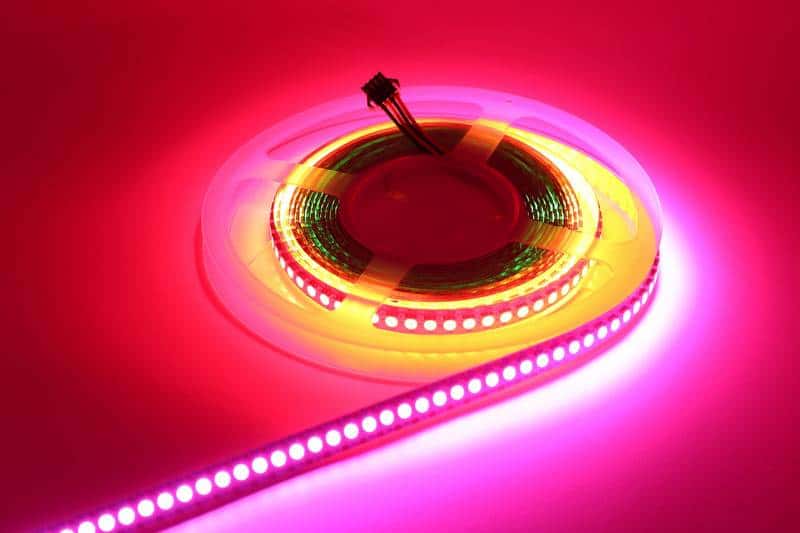When we speak of PCBs, we imagine a rigid board with components. In more complex electronics PCBs may be stacked on top of each other of interconnected with wires. However, the geometry of rigid boards in many cases define the shape of electronics devices. If devices are significant such as TVs, computers, then rigid boards find their place. However, even large devices become limited by rigidity. If you try to disassemble a modern TV or another device, you will find that not all boards are rigid. For instance, an LCD display is using a flexible printed circuit (FPC) and a flexible flat cable (FFC), which can be conveniently bent without taking much space. This allows laptop screens to be so thin.

In modern electronics circuit boards can find their place regarding the shape and size of the device. Smartphones are stuffed with flexible circuits – cameras, speakers, batteries, displays are connected using FFC. Emerging folding smartphones have even tighter FPC fit.
Flexible printed circuits usually mimic the rigid boards – the only difference is the base material used. Instead of hard materials such as FR4, a flexible and thin PET or Polyamide is used.
Types of Flexible PCBs

Depending on the complexity of electronics, there can be:
A single-sided FPC. Like conventional rigid boards, single-sided boards contain simple circuits. Copper lines lie on a single side of polymer.
Double-sided FPC. As the name suggests, it contains a circuit on both sides of flex base material. These circuits tend to be more involved, requiring metalized through holes to connect the top and bottom layers.
Multilayer FPC. These boards have multiple layers of copper and base material sandwiched on top of each other. The interconnection of various layers is more complicated. For instance, a PCBWay is capable of building flex PCBs with 8 layers.
Rigid-Flex. As a different category, there can be a hybrid circuit build for particular purposes which incorporates flexible and rigid parts as a single unit. Flex part of the circuit provides high flexibility where bending is needed while a rigid part poses higher component density. Direct transition from flex to standard PCB also frees from using additional connectors.
Pros of Flex PCBs
- Single flexible PCB can replace multiple rigid boards in tight spaces;
- Many FPCs and FFCs can be stacked on each other without taking significant space. In cell phones, you can see how this benefit is used.
- Designers have more freedom to shape the products.
- Better vibration resistance.
- Better withstanding of thermal stress.
- Les connectors and bridges needed.
- End product assembly may be less costly due to the lack of board support materials.
Cons of Flex PCBs
- Flex circuits are less resistant to static electricity.
- Less resistant to environmental factors and chemical damage.
- There is a risk to overbend or tear when handling.
- It is nearly impossible to repair the damaged board.
- In some designs, it may increase the cost.
- Assembly process is challenging to automate.
Typical applications of Flex PCBs

Probably the most visible usage of flexible PCB is LED stripe. They can be very long and winded into reels. They can be cut into shorter strips. One side can be made sticky, which makes it convenient to install on weird shapes.
Another intense use of FFC is smartphones, cameras and other small electronics. Electronics in such devices are modular, meaning that each function has it own separate board which connects to the motherboard. Cellular phones are highly modular, having tens of small building blocks that are connected to the motherboard via flex cables. Cameras are even more complicated where electronics is shaped inside and is packed really tightly. If you tried to disassemble a modern camera, you would have a hard time to put everything together as everything is squeezed tight.
Another large industry is the automotive field, where flexible circuits are used in instrument panels, controls and other components. Car controls can get more natural shapes, but most important flexible electronics a more resistant to vibrations.
Flexible PCB technology is not a replacement of rigid, but rather a supplement that may go well together. Flexible PCBs may require additional manufacturing steps, which makes it a bit more expensive. In the end, the overall cost may be even lower as it may require less wire harness and operations. Check out PCBWay options for flexible and rigid-flex PCBs.


